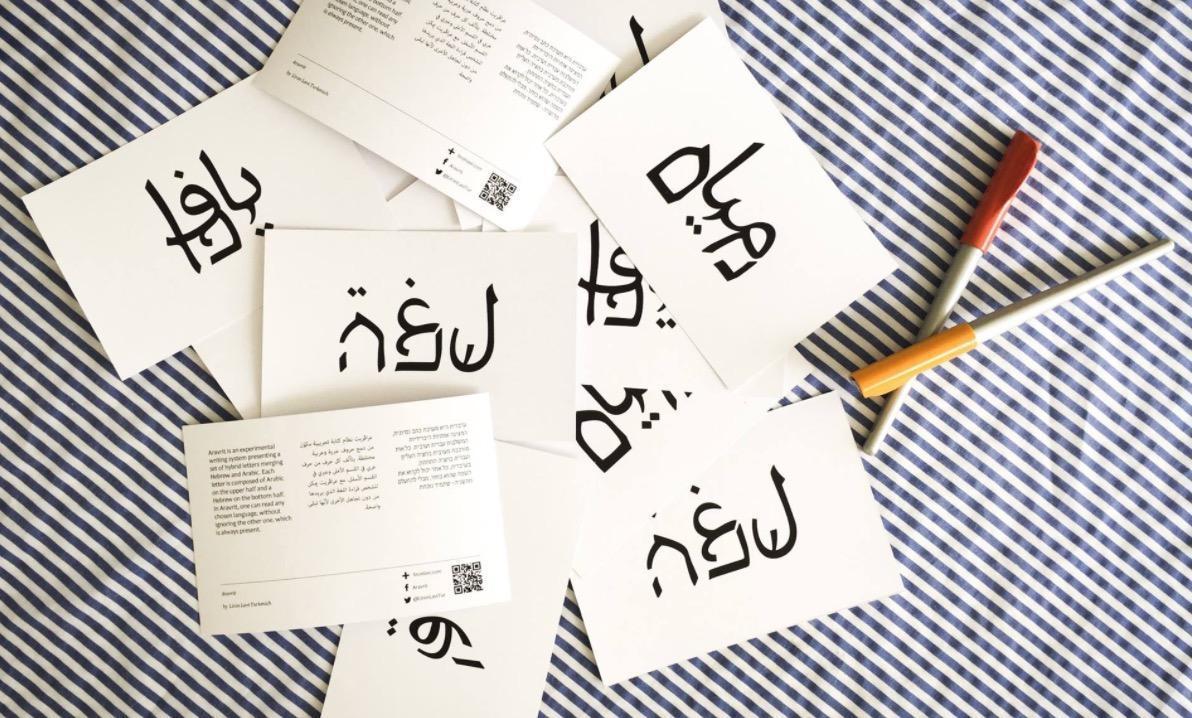Israeli woman invents new typeface combining Arabic and Hebrew to promote co-existence
Typography designer Liron Lavi Turkenich creates 638 character alphabet which can be read by speakers of both languages

Aravrit, a new typeface which manages to merge Hebrew and Arabic letters together, is being billed as a language of peace - and it’s not hard to see why.
Liron Lavi Turkenich, a 32-year-old Israeli typeface designer and researcher, was inspired to see if she could combine the two languages by the bilingual road markings and other official signage in her home town of Haifa, which has a large Arab population.
“It’s common to hear both Hebrew and Arabic in Haifa. I don’t speak Arabic, and one day I noticed I ignore the language,” she said in a video explaining how Ararvit works. “I looked for a way to bridge the gap and that led to my project.”
The writing system utilises the work of French ophthalmologist Louis Émile Javal, who discovered that we only need to be able to see the top half of Latin letters to make sense of a word.
The same is true for Arabic - and, as Ms Turkenich found, the bottom half of the Hebrew alphabet.
She eventually created 638 characters which cover all possible letter combinations.
While several initiatives along the same lines as Aravrit have been floated in the past, but Ms Turkenich’s invention appears to be making real waves: a video in Hebrew explaining the project has been viewed on different social media accounts more than a million times and generated thousands of positive comments since it was picked up by Israeli public broadcaster Kan last week.
"I am incredibly happy that Aravrit finds a space in so many people's hearts. In addition to the positive reactions, the project also brings up important discussions. I feel that it gives people a way to express hope, from a very basic point of view - language," Ms Turkenich told The Independent in an email.
Language is often tied up with politics in Israel and the occupied West Bank; in May, Israeli politicians gave their backing to a bill which would make Hebrew the only official language in the Jewish state - a move critics said marginalises Israel’s 20 per cent Arab population.
“This didn’t start as a political project, but the response on the street is amazing,” Ms Turkenich said.
“People can read it right away and feel like they’ve solved a riddle. Bottom line, I wanted everyone to read the language they find easiest… without ignoring the other language which is always present."
The typeface designer has hopes that her new script could be adopted across the country.
"It would be great to see it incorporated into public spaces or any suitable platform we come across in our daily lives," she said.
Subscribe to Independent Premium to bookmark this article
Want to bookmark your favourite articles and stories to read or reference later? Start your Independent Premium subscription today.

Join our commenting forum
Join thought-provoking conversations, follow other Independent readers and see their replies